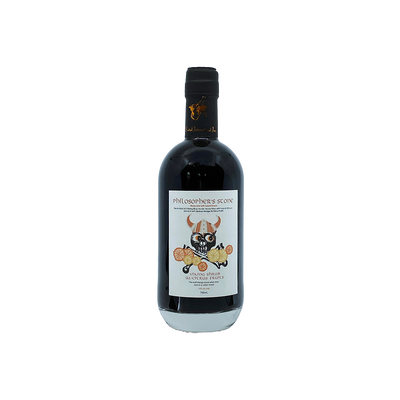Fruit Mead
What is Fruit Mead?
Fruit mead is a specific type of Flavored Mead where fresh or dried fruits are added during fermentation or aging to create complex, naturally sweetened honey wines. The fruit additions can range from traditional choices like blackberries and apples to exotic options like dragon fruit or passion fruit, each contributing its own sugars, acids, and aromatic compounds to the final product. What defines fruit mead is this marriage between honey's floral sweetness and fruit's vibrant flavors, resulting in beverages that can taste anywhere from crisp and tart to rich and dessert-like.
Learn More About Fruit Mead
What makes Fruit Mead unique?
Fruit meads stand apart from other flavored meads because they incorporate actual fruit during fermentation rather than just adding flavoring extracts or essences after the process is complete. This means the fruit's natural sugars contribute to the alcohol content while the yeast breaks down the fruit's cellular structure, creating complex flavor compounds that can't be replicated through artificial means. Unlike spiced meads that rely on botanicals or herb-infused varieties that use dried ingredients, fruit meads capture the fresh, vibrant character of whole fruits, resulting in beverages that taste authentically fruity rather than artificially enhanced.
How is Fruit Mead made?
Fruit mead starts with the same foundation as traditional mead—honey mixed with water that's fermented using yeast—but gets its distinctive character from the addition of fresh fruit, fruit juices, or fruit purees either during primary fermentation or in a secondary stage. The fruit can be added at different points in the process: some meadmakers include it from the beginning to let the fruit sugars ferment alongside the honey, while others prefer adding it after primary fermentation to preserve more of the fruit's natural flavors and aromas. Popular fruits like cherries, berries, apples, and stone fruits each bring their own unique characteristics to the final product, creating everything from tart cranberry meads to rich blackberry varieties.
How do you drink Fruit Mead?
Fruit mead shines brightest when served chilled and neat, allowing its natural honey sweetness and fruit flavors to take center stage without interference. While some people enjoy it on the rocks during warmer months, it's rarely used in cocktails since its complex flavors tend to get muddled when mixed with other spirits. This ancient fermented honey wine works beautifully as an aperitif or dessert drink, making it perfect for autumn harvest celebrations, holiday gatherings, or any time you want to savor something that connects you to thousands of years of brewing tradition.
How do I choose good Fruit Mead?
When selecting a fruit mead, look for producers who balance the honey's natural sweetness with bright, authentic fruit flavors—avoid anything that tastes overly cloying or artificially flavored. The best meads showcase both ingredients equally, so you can taste the honey's floral notes alongside the fruit's natural character. For cocktails, choose drier meads with pronounced fruit flavors that won't get lost when mixed, while sweeter, more delicate meads work better on their own or with minimal additions like sparkling water.
Nutritional Information
Typical Calorie Range per Ounce: 20-35 calories
Typical Carbohydrate Range per Ounce: 2-6 grams
Typical Sugar Range per Ounce: 1-4 grams
Typically Gluten Free: Yes
Since fruit mead is made from honey, water, yeast, and fruit—none of which naturally contain gluten—it's generally safe for those avoiding gluten. That said, some meadmakers might use additives or processing methods that could introduce gluten, so always check the specific product label and manufacturer information to confirm gluten-free status if you have celiac disease or severe gluten sensitivity.
Scrolled this far? Your reward? Fruit Mead Trivia!
- Ancient Egyptian pharaohs were buried with jars of pomegranate mead because they believed it would give them supernatural powers in the afterlife - and archaeologists have found 3,000-year-old samples that still smell fruity when opened.
- The term "honeymoon" actually comes from the medieval tradition of newlyweds drinking fruit mead for one full moon cycle after their wedding, as cherry and elderberry meads were considered aphrodisiacs that would ensure fertility and happiness.
- During Prohibition, creative American bootleggers discovered that adding wild berries to homemade mead created natural carbonation and masked the alcohol smell so well that federal agents called it "the invisible booze" - leading to the first underground mead speakeasies.
- NASA scientists have seriously studied mead production for Mars colonies because honey and dried fruits store indefinitely, ferment in low gravity, and the natural antioxidants in berry meads could help astronauts combat radiation exposure on long space flights.
- Professional mead makers can determine the exact fruit used in any mead just by listening to the fermentation bubbles - raspberry mead creates rapid, high-pitched pops while apple mead produces slow, deep gurgles due to different sugar molecular structures.
Higher-proof spirits can be intense. Mix carefully, taste thoughtfully, and enjoy responsibly.
Gift message (optional)

